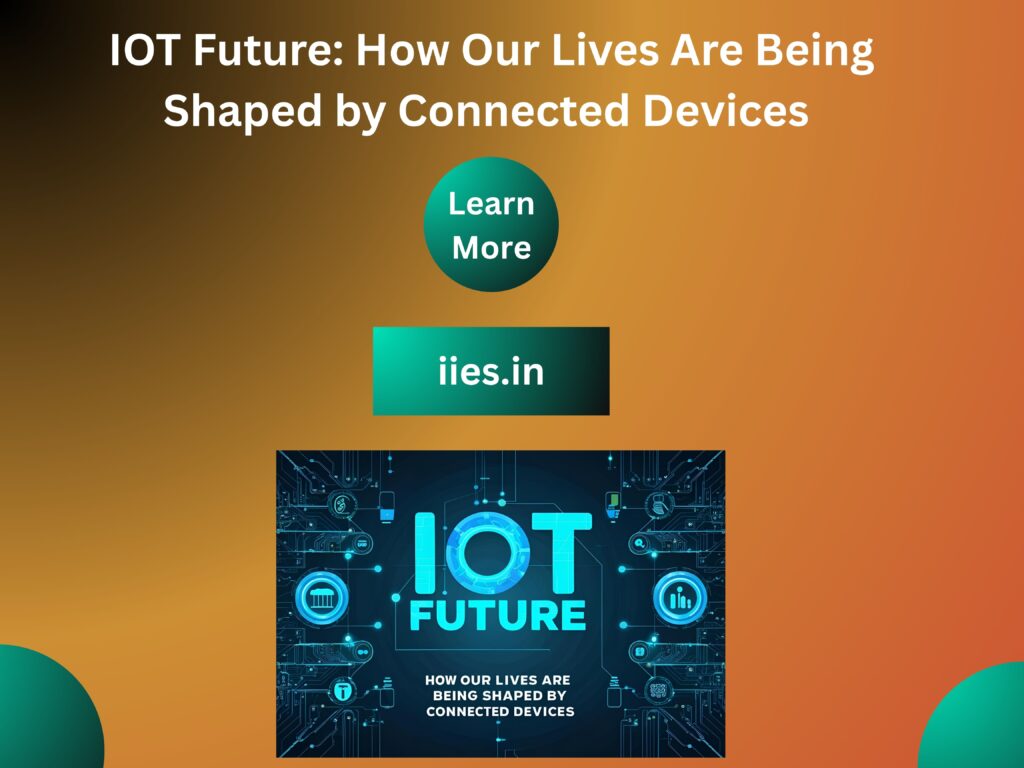
The Internet of Things (IoT) is no longer a concept of the future—it’s a present-day reality that’s rapidly reshaping the way we live, work, and interact with the world. From smart thermostats and wearable health trackers to intelligent factories and connected cities, IoT devices are seamlessly integrating into nearly every aspect of our lives. These technologies are creating smarter environments that adapt to our needs, enhance efficiency, and offer real-time insights that were previously unimaginable.
IoT allows physical devices to communicate and act based on data, transforming everything from how we monitor our health to how cities manage traffic, waste, and energy. With the ability to automate tasks, improve safety, and personalize user experiences, IoT is ushering in a new era of digital convenience and operational efficiency. In industries, it’s enabling predictive maintenance, real-time logistics tracking, and smart production lines. In homes, it’s making daily routines more seamless through voice-controlled assistants, energy-saving appliances, and security systems.
The integration of AI and edge computing with IoT is pushing the boundaries further—allowing devices to learn, adapt, and make decisions with minimal human intervention. As 5G networks roll out globally, the IoT landscape is poised to expand even faster, supporting millions of devices with ultra-low latency and high-speed data transmission.
A network of physical devices that exchange information and communicate via the internet is referred to as the Internet of Things (IoT). These gadgets might be anything from commonplace items like wearables and smart thermostats to sophisticated industrial gear.
How the Internet of Things Operates:
Sensors, software, and other technologies are integrated into devices to gather and send data, allowing for automatic actions and real-time insights. Usually, the data is processed via edge computing or the cloud, allowing for speedy decision-making.
The way we manage our houses has been completely transformed by Internet of Things-enabled smart home appliances like voice assistants, security cameras, lighting controls, and thermostats. These gadgets improve convenience, security, and energy efficiency by learning user preferences and automating chores. Wearable Technology: Smartwatches, fitness trackers, and health monitoring gadgets are quickly becoming indispensable in today’s world. These gadgets support proactive healthcare management by assisting users in monitoring their health measurements and, in certain cases, by sending out real-time notifications for health-related problems.
Revolutionizing Medical Treatment Telemedicine and Remote Monitoring: Remote patient monitoring, made possible by IoT devices, allows healthcare providers to monitor patients’ vital signs and symptoms in real time, improving care and lowering hospital stays. This is particularly crucial for managing chronic illnesses and providing care for the elderly. Smart medical devices: By providing healthcare professionals with real-time data that enables more precise diagnosis and treatments, gadgets like connected insulin pumps, heart rate monitors, and pacemakers are improving patient outcomes.
Through automation, real-time machinery monitoring, and predictive maintenance, IoT is transforming sectors including manufacturing, logistics, and supply chains. By identifying problems before they become serious ones, sensors can drastically cut down on downtime and boost productivity.
Future factories will be smarter because to the cooperation of robots, sensors, and AI-powered systems that will increase output, better quality assurance, and optimize energy use.
IoT-enabled systems are making cities smarter
by streamlining everything from trash management to traffic flow. Intelligent public transportation systems, automatic parking, and smart streetlights are improving urban residents’ quality of life while cutting costs. Efficiency and Sustainability:
By maximizing energy use, enhancing waste management, and lowering carbon footprints through smart grids and environmental monitoring, IoT is also significantly contributing to the development of more sustainable cities.
By offering quicker, more dependable connectivity, the introduction of 5G networks will greatly expand IoT capabilities. Lower latency, real-time data transmission, and simultaneous support for millions of linked devices will all be made possible by this.
Enabling New IOT Applications:
5G will make it possible for advancements like smart factories, driverless cars, and real-time medical monitoring, where immediate device-to-device connectivity is essential.
The likelihood of data breaches and cyberattacks rises with the number of devices linked to the internet. One of the biggest challenges is protecting sensitive data sent by IoT devices, which calls for strong authentication procedures and encryption techniques.
As a result of the enormous volumes of personal data produced by IoT devices, privacy issues are becoming more prevalent. Users must be in charge of their data, and businesses must abide by privacy laws to prevent personal data from being misused.
Integration of AI and IOT: Smarter, self-learning systems will result from the combination of artificial intelligence (AI) with the Internet of Things. AI will enable IoT devices to make decisions on their own using real-time data, from self-driving cars to predictive maintenance in industries. Edge Computing: In IoT systems, edge computing will proliferate in order to lower latency and boost efficiency. Edge computing will allow for quicker decision-making without substantially depending on cloud services by processing data closer to the point of data gathering. IOT in Sustainability: By improving waste management, monitoring environmental conditions, and optimizing energy use, IoT will become more and more significant in sustainability initiatives.
IoT has a very bright future ahead of it, with linked gadgets expected to improve our daily lives, workplaces, and interactions with others. The potential advantages are enormous, ranging from smarter homes and cities to improved healthcare and industrial efficiencies, even though issues like security and privacy must be addressed. IoT will play a key role in creating a connected and intelligent world as technology develops further.
Indian Institute of Embedded Systems – IIES